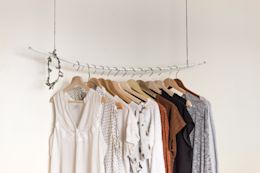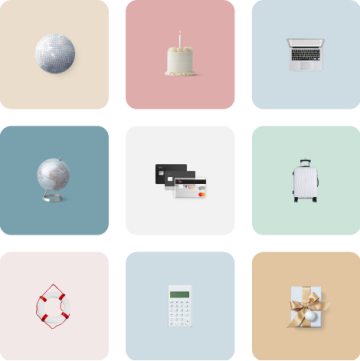
Your guide to buying and selling second-hand - N26
Get all the tips you need for buying and selling second-hand, online or in-store!
7 min read
Why buy second-hand?
What are the advantages of buying second-hand?
- Help save the planet. The textile industry emits around 1.2 billion tonnes of CO2 per year, or 2% of greenhouse gas emissions. Did you know that clothing consumption has increased by 60% compared to fifteen years ago? Not only does buying new clothes contribute to pollution, it also supports an industry with poor working conditions. By moving their factories to developing countries, major fashion brands have created what’s known as fast fashion—cheap, poor-quality clothing made of non-sustainable fabrics that relies on low-paid labor.
- Save money. As well as protecting the planet, buying second-hand clothes and furniture can help save you money. When you buy second-hand and bring a used object back to life, you usually wind up spending less than you would on a brand new version.
- Find unique items. At a time when big brands have standardized consumer goods, buying second-hand is also a way to express your style and find unique items. What could be more satisfying than finding a jacket or piece of furniture with a one-of-a-kind design?
What are the disadvantages of buying second-hand?
- Vintage pieces won’t always match your taste. Second-hand clothes and furniture don’t always match what we’re looking for. When buying used clothing, you might need to be flexible rather than holding out for the exact piece you were hoping to find.
- Second-hand items may have a shorter lifespan. When you buy a second-hand product, it might not last as long as a new purchase. This is why it’s important to choose a quality brand, and look for items with as little damage as possible.
- Your size won’t always be available. Unlike conventional stores, thrift and vintage stores often have a limited choice of sizes. In fact, it’s pretty rare to find the same item available in multiple sizes, so you’ll have to make do with what’s available.
- Buying second-hand takes time. Finding a rare gem can mean spending a lot of time at flea markets and second-hand stores. If you're in a hurry, second-hand shopping might not be the best choice.
Tips for selling second-hand clothes
How to sell second-hand clothes online
- Post photos of the clothes being worn. Photograph the items from different angles on an actual body. The more you show potential buyers how the clothes look while being worn, the more likely they are to purchase them. Consider optimizing the brightness and sharpness of the photo to make your listing more attractive. What’s more, taking a picture of the label, especially for well known brands, also adds a sense of trust in the item you’re selling.
- Offer as many payment methods as possible, making it easy for people to purchase.
- Try to minimize shipping costs. This is especially important if you’re selling inexpensive clothes to make sure the cost of shipping isn’t greater than the purchase amount.
- Describe your item in as much detail as possible. From material to condition, to size and color, buyers need to get an accurate picture of the item they’re buying. If it’s damaged, be transparent about this in the description to avoid any disputes later on.
- Fill out your bio. This gives buyers confidence. If you’re posting clothes that have been worn, remember to include your size to give buyers a sense of scale.
- Ask for reviews to build trust. Reviews are very important when it comes to selling clothes online, especially because of the risk of scams—so any positive feedback will help your sales.
How to sell second-hand clothes in stores
Budgeting made simple
N26 Spaces sub-accounts make it easy to set money aside for your goals in just a few taps.
Get sub-accounts in minutes
Buying second-hand—Where to find vintage clothes and vintage furniture
What’s the best place to find vintage furniture?
Where to buy vintage clothes
Love all things second-hand? Manage your spending with N26
Find similar stories
BY N26Love your bank
Related Post
These might also interest youLIFESTYLECould AI help you manage your money?86% of people are open to using AI for financial planning, but is it safe? Learn how AI is already transforming money management, and discover the pros and cons.
4 min read
LIFESTYLEUnderstanding tariffsFrom higher grocery bills, pricier electronics, and stock market swings, tariffs can impact your wallet and your investments.
5 min read
LIFESTYLEDe-hyping the no-spend challengeThis extreme challenge promises to transform your finances, but is it really the game-changer it claims to be?
4 min read


